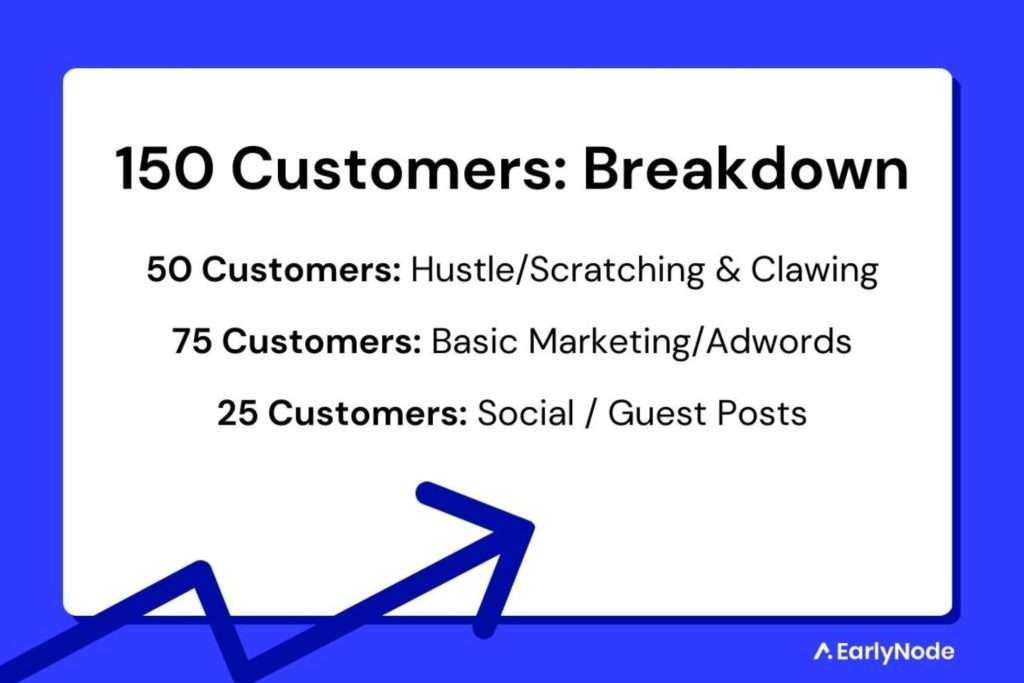8 SaaS lessons from unicorn bootstrapper Jason Cohen

In The SaaS Operator newsletter from 21 March 2023 you will learn:
- Why it’s okay to be second-to-market.
- How to know when you’ve hit product-market fit.
- Don’t confuse goals for strategy.
Jason Cohen is the founder of WP Engine, IT Watchdogs, and A Smart Bear – two of which are unicorns. Here are some of his sagest remarks served up as actionable lessons for early, growth, and scale-stage startups.
Lessons for early-stage start-ups:
1. Don’t be scared to be a second-mover.
We’ve all come up with a brilliant, “unique” business idea only to Google it and find that someone else is already doing it. But despite the so-called first mover advantage, the pioneer doesn’t always win.
In Jason’s opinion, being first can come with more disadvantages than advantages.
The first ones in the market are always in the spotlight and all their mistakes are public. And worse, they may experiment with features that turn out to be unnecessary. While they’re wasting resources to support those legacy features, competitors are enjoying all that hindsight and none of the baggage.
2. Bootstrappers should be obsessed with ARPU.
As a bootstrapped founder, your first objective is to ditch the day job and go full-time with your startup. But to do so you need your startup to be earning enough money for you to live on and for basic business expenses – let’s call it $10K a month. The right ARPU is key to unlocking that cash.
You can probably hustle up your first 150 customers even while you have a day job by scratching and clawing and using basic marketing channels like SEO, AdWords, and social media.
Now, with 150 customers you’d need $66 ARPU to get to that $10K mark and go full-time. So you should set your pricing tiers between $50 and $100.

Bonus: According to a recent report from ChartMogul, companies with higher ARPU tend to grow 1.5-2x faster, show way less churn, and enjoy more expansion revenue than lower ARPU companies.
3. Increasing your cash flow with annual plans.
Cash flow is a big problem for bootstrappers, especially in the beginning.
According to Jason, pushing annual plans (rather than monthly) is the easiest way to tackle this problem.

Let’s say only 25% of your customers subscribe to annual plans (which is the case for Jason’s company WP Engine). That already more than triples your monthly cash flow, allowing you to supercharge your growth by spending more on marketing or a helping hand.
Lessons for growth-stage start-ups:
4. What does it feel like to hit product-market fit?
Every SaaS company wants to hit product-market fit as quickly as possible. But, despite being the holy grail for startups, PMF remains an enigma.
In fact, investors and entrepreneurs have different and sometimes even conflicting opinions on what product-market fit actually is and how you know when you have it.
Jason Cohen has experienced the feeling of finding PMF three times as a bootstrapper and he has a unique view on how to know when you’ve found it.
He describes a “palpable change in the struggle”. Instead of scrambling for business, suddenly you’re struggling to keep up with demand.
“Usually, you can just see it in the metrics. You start growing faster all of a sudden. And you look around and say ‘Why?’ and there’s not really a great reason. At WP Engine, we knew because we could see a literal hockey stick [on our growth graph].”
If you experience this kind of shift, and you can’t trace it back to a change in marketing spend or product offering, that is the signal you’ve been hoping for.
5. Finding your place in a red ocean.
Apple stands out on design. Patagonia is synonymous with sustainability. Ikea’s focus is style and affordability. These companies have chosen one or two attributes to maximize in order to hone in on a slice of the market and stand out against the competition.
To grow in a hyper-competitive market like SaaS, it’s even more important to carve out a niche where you can win market share.
So what attribute should you focus on? Top-notch security? Best customer support? Incredible UI/UX design?
One way to make this decision is to apply the following three filters:
a) What do customers care about? Remember: Not all of your customers need to agree. If 30% care deeply about your USP, that’s the perfect wedge to win a market.
b) Which of those needs are currently underserved by the competition?
c) What can you do best? After sorting out what customers care about, choose something that you have the resources to double down on.
6. When to hire your first manager (and second and third…).
When you start your business, everyone reports directly to you (the CEO). But as your team grows, there comes a time when there are too many people for you to manage directly. You can no longer know and manage everything. It’s time to hire a manager.
According to Jason, that natural break point is pretty standard and predictable across different companies and it happens when your team is around 12-15 members strong.
By the time you have 30-70 employees, you’ll have reached another natural breakpoint. By now, the only people who should be reporting to you are managers. Your goal is to hire managers who are better at building strong departments than you are, so you can stay focused on the big picture.
If you’re growing your first business, these milestones can help you understand your evolving role as CEO as your organization grows.
Lessons for scaling start-ups:
7. Don’t confuse goals with strategy.
Jason believes that most people don’t understand what a strategy is. “To grow 2x this year” is a goal, not a strategy.
He outlines three main steps to developing one.
First, gather, analyze and digest the facts. This includes information about your customers, your competitors, and what’s happening in the market. The trick is to be really honest, even if what you find is scary.
Tip: You can use Porter’s Five Forces to collect the necessary data. It’s a 50-year-old proven framework.
Getting all this on paper means your whole team has a “shared understanding of the truth” including the business’ strengths and weaknesses and the competitive threats.
The next step is to identify the one key challenge facing the business. It will be both a big problem and a big opportunity. Pick something specific and data-backed.
Finally, figure out the coordinated actions that the whole company can take to meet that challenge. Including every department in your strategy process empowers everyone to come up with ideas to support the path you choose as CEO.
8. The overlooked humanity of people management.
When you think about managing a 1000-person team, things like optimizing organizational structure, boosting productivity, and the payroll burden might come to mind. But there’s no strategy or business school training that can prepare you for the human element of a team of that size.
Without a doubt, your employees will experience every major life event from birth to death, illness to divorce, loss, injury, and everything in between.
These challenges require emotional support and decision-making from you and your company. As you grow, anticipate that you’ll need to learn to cope with this.
Who should we cover next? If you have a SaaS expert in mind, let us know by sending us an email at saas@earlynode.com.




